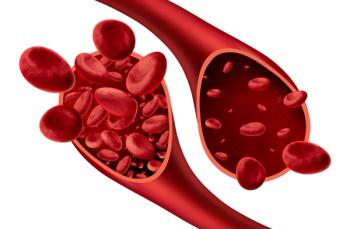
Why Spring and Summer Weather May Help Flatten the COVID-19 Curve
The cooler dry air of winter helps spread the SARS-CoV-2 virus that causes COVID-19, according to review article published in the Annual Review of Virology. As humidity increases during the spring and summer months, the risk of aersol transmission decreases both outside and indoors in places such as offices.
Why? Because when cooler outdoor air with little moisture is heated to indoor temperatures, the air’s relative humidity decreases even further, to about 20%. That relatively moisture-free air provides a clear path for airborne viral particles to travel through.
"Ninety percent of our lives in the developed world are spent indoors in close proximity to each other," said Yale immunobiologist and senior author
Heated, dry indoor air also dampens the ability of cilia, the hair-like projections on cells lining airways, to expel viral particles, according to the press release about the
Iwasaki stresses, though, that this body of research only applies to aerosol transmission. SAR-Cov-2 and like viruses can still be shared at any time of year between people in close proximity and through contact with surfaces containing sufficient amounts of virus. That is why people living in warm countries and people working close to each other are still susceptible to infection, she said. "It doesn't matter if you live in Singapore, India, or the Arctic, you still need to wash your hands and practice social distancing."
In areas of high relative humidity such as the tropics, airborne infectious droplets fall onto surfaces indoors and can survive for extended periods, Iwasaki said. "Many homes and buildings are poorly ventilated and people often live in close proximity, and in these cases, the benefits of higher humidity are mitigated," Iwasaki said in the press release.
A now-famous
Iwasaki and herco-authors, Miyu Moriyama of Yale and Walter J. Hugentobler of the University of Zurich, discuss experiments that show rodents infected with respiratory viruses can easily transmit viral particles through the air to non-infected neighbors in low-humidity environments.
There is a sweet spot in relative humidity for indoor environments, according the review. Mice in environments of between 40% and 60% relative humidity show substantially less ability to transmit viruses to noninfected mice than those in environments of low or high relative humidity. Mice kept at 50% relative humidity were also able to clear an inhaled virus and mount robust immune responses.
Iwasaki said the seasonal nature of respiratory illnesses have been chronicled since the times of the ancient Greeks, who noted such illnesses rose in winter and fell during spring and summer.
Newsletter
Get the latest industry news, event updates, and more from Managed healthcare Executive.





















































